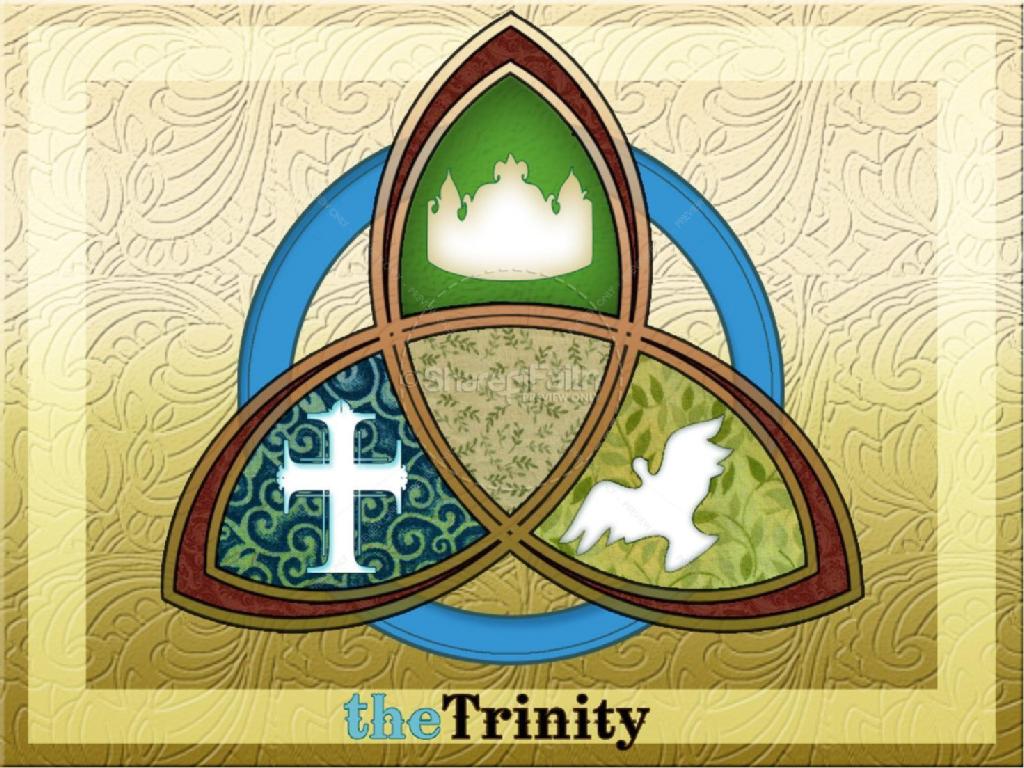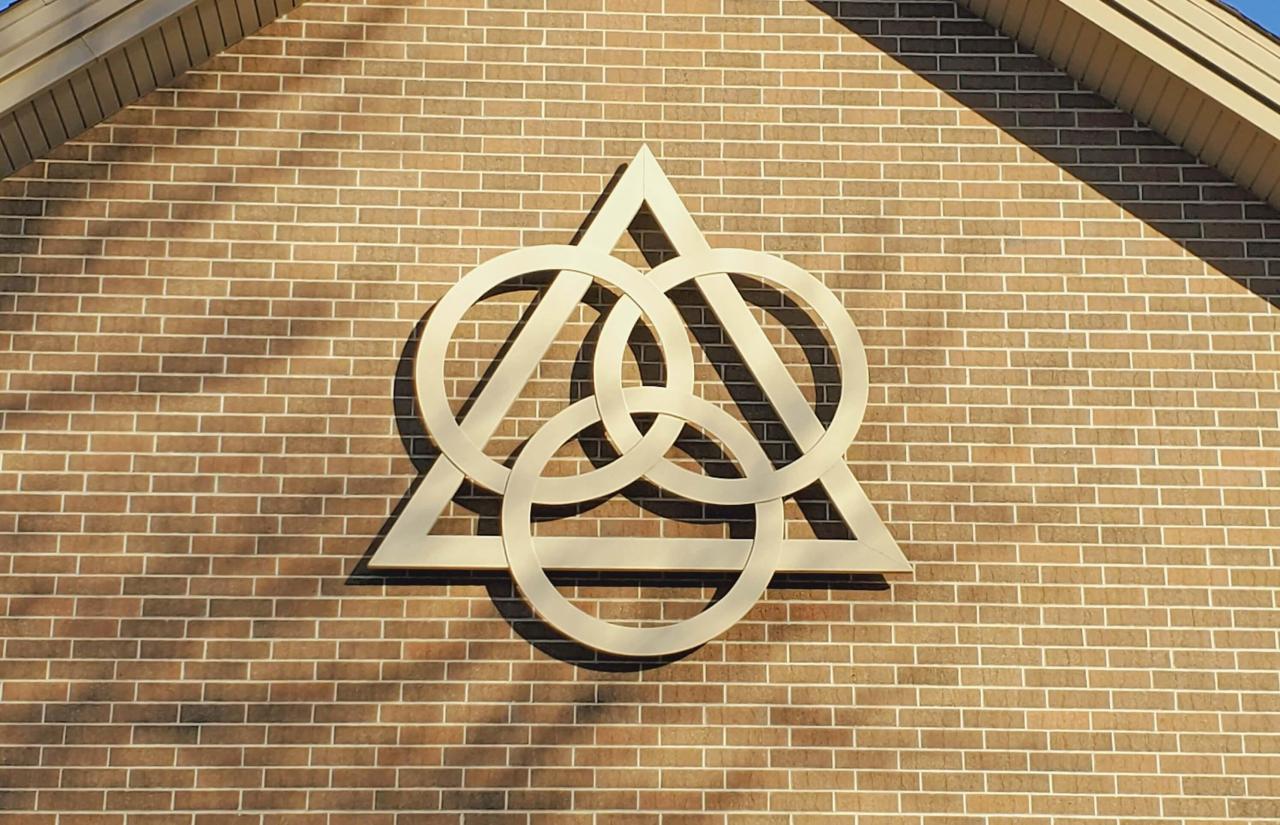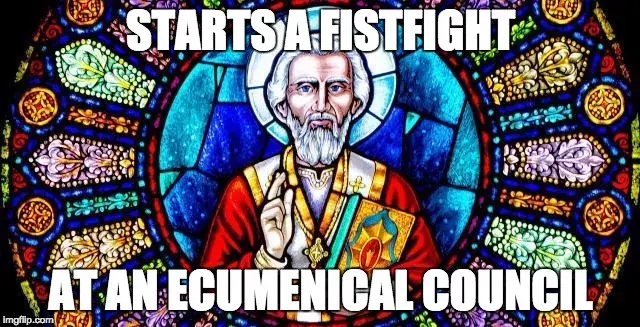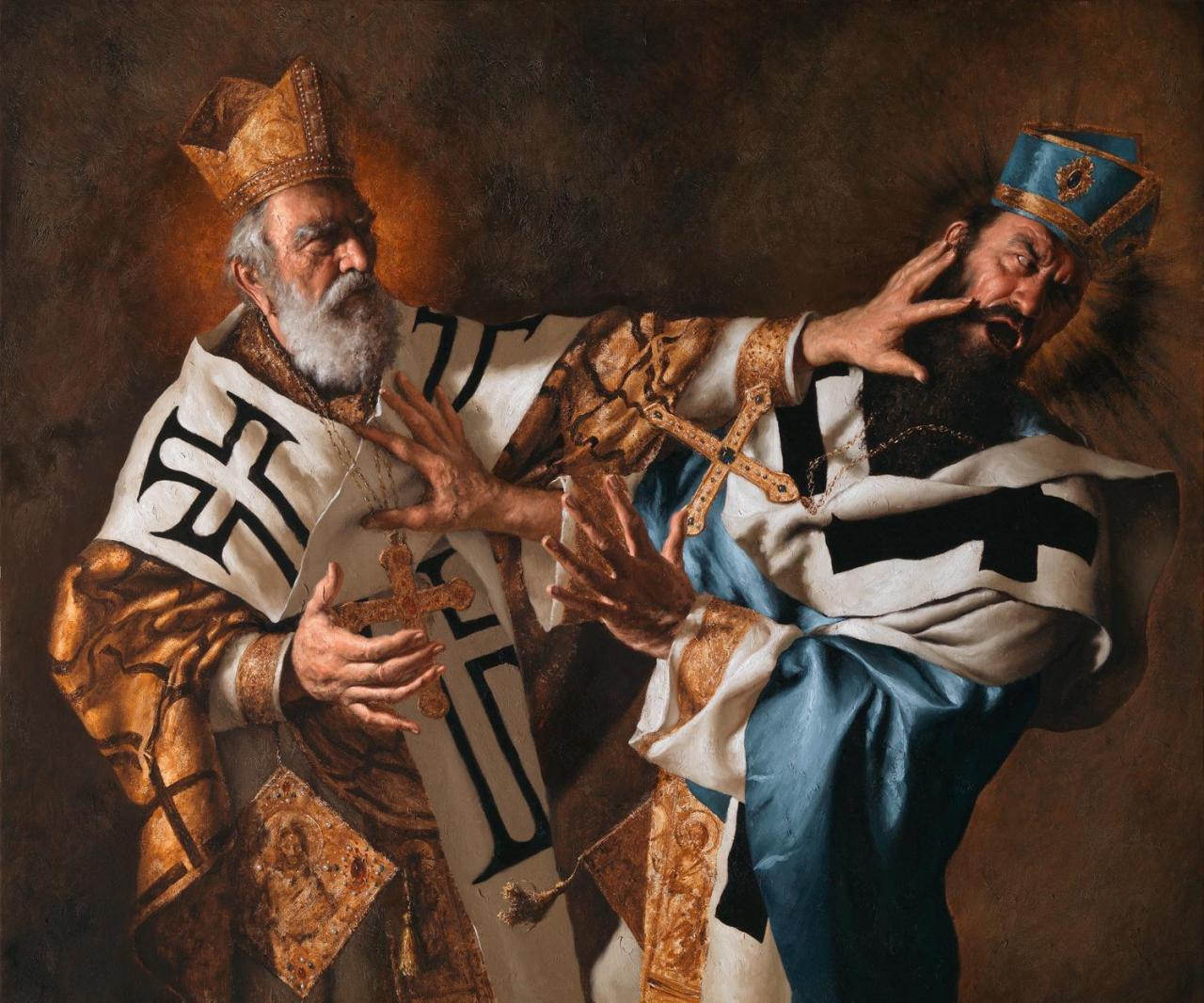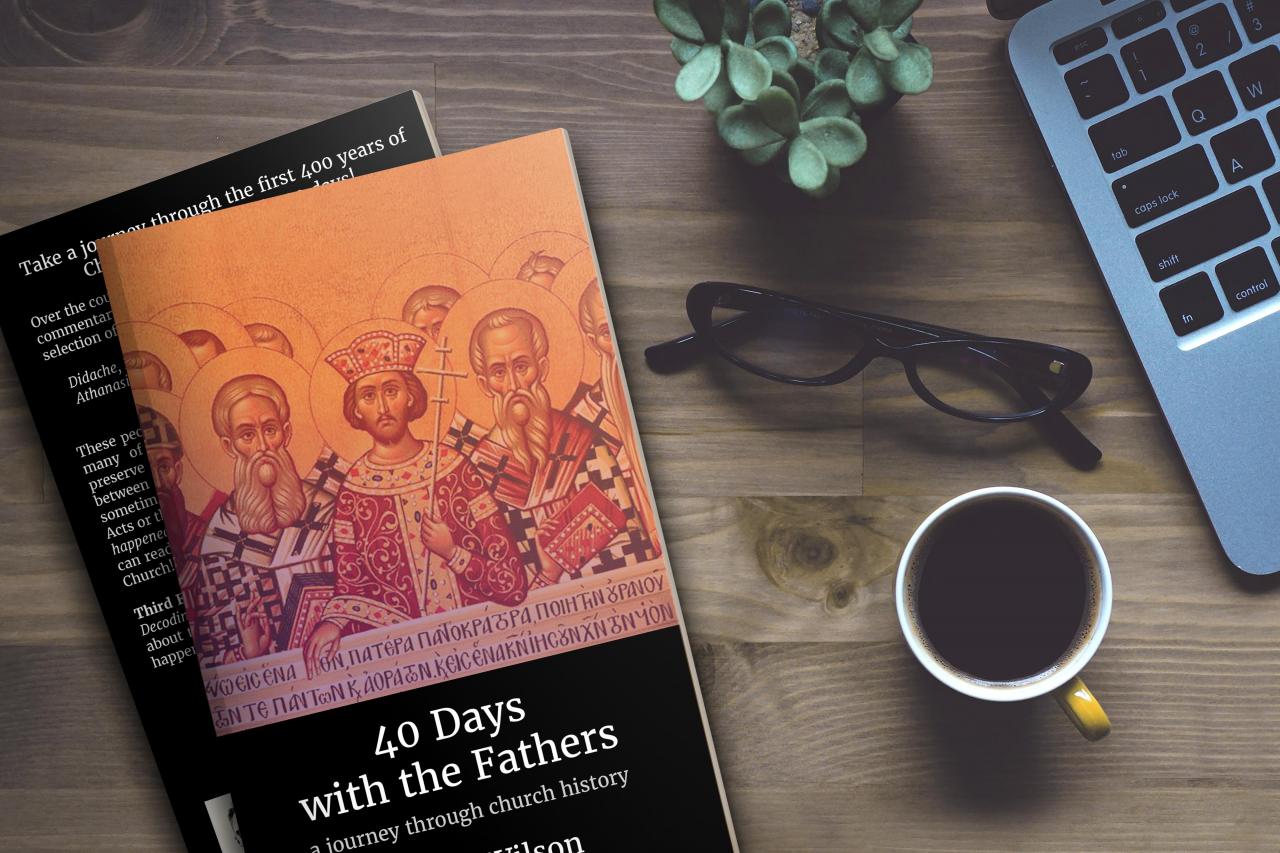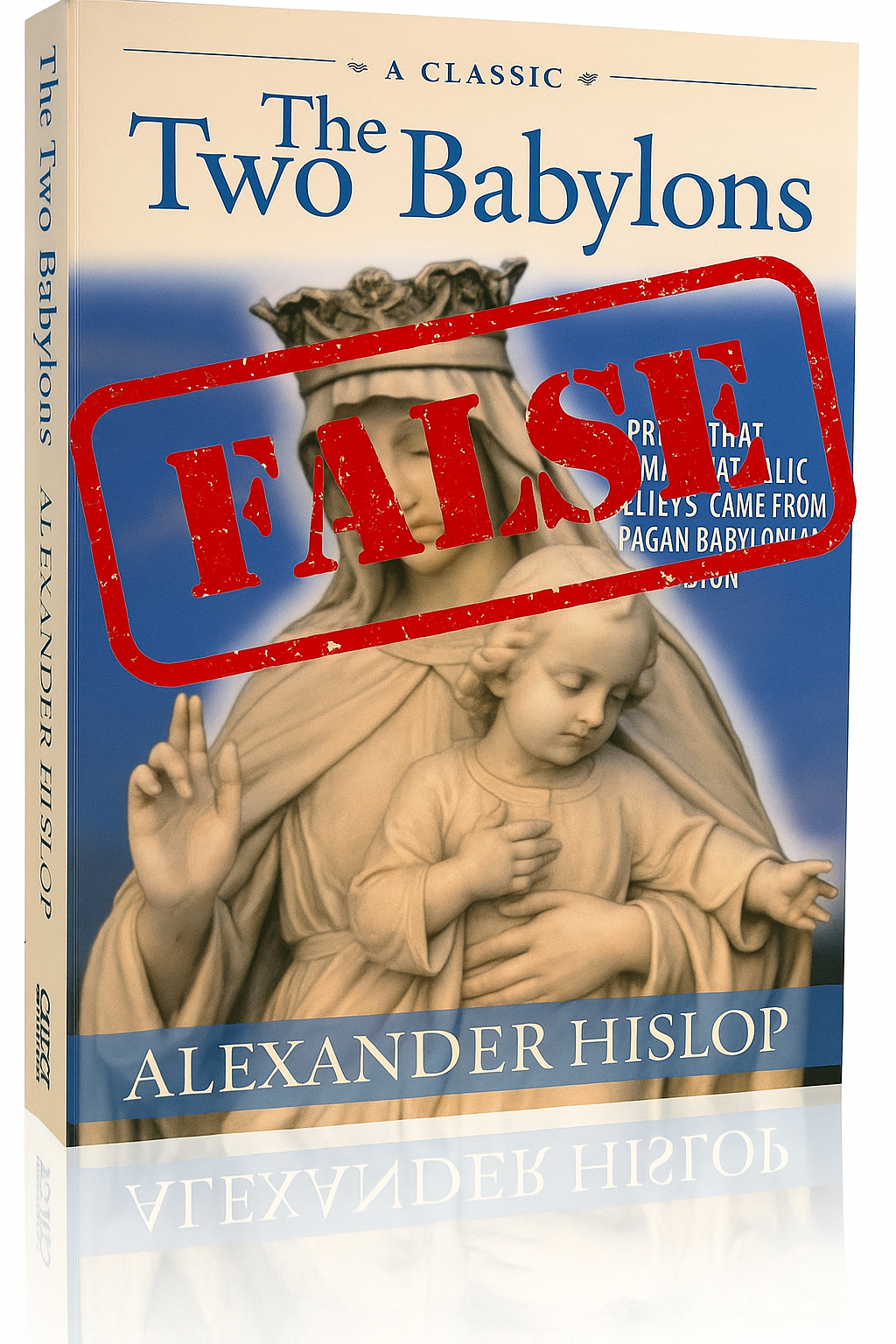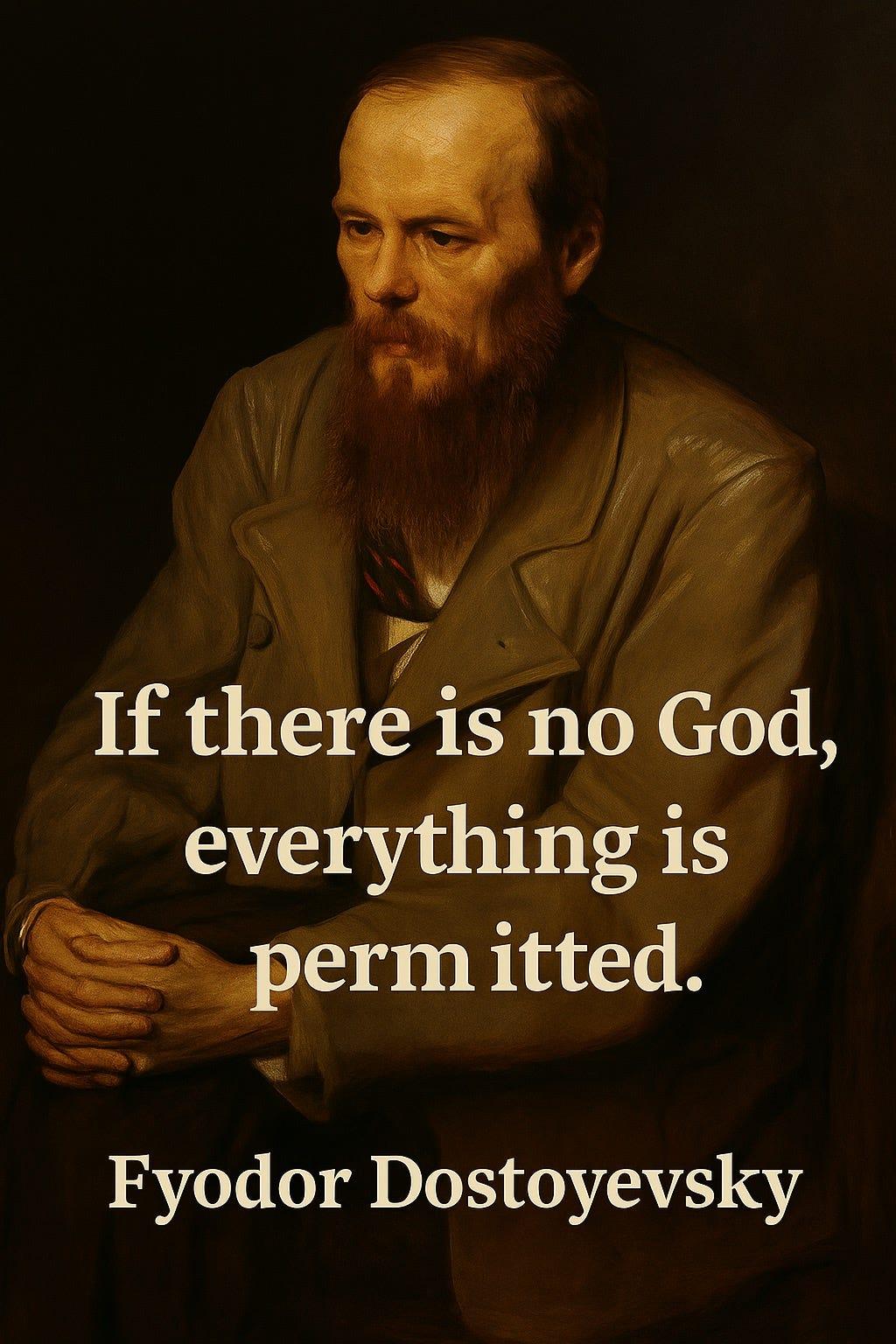Did the Early Church invent the Trinity?
The doctrine and concept of the Trinity is encapsulated in Matthew 28:19, where Jesus instructs the apostles: “Go therefore and make disciples of all nations, baptizing them in the name of the Father and of the Son and of the Holy Spirit”. John, who was very close to Jesus and obviously knew him well, alludes to this teaching frequently in his Gospel, too. For example: John 1:1; John 8:58; John 10:30; and John 10:38.
Yet, despite this, and numerous other examples throughout the New Testament which point towards the threefold nature of God, plenty of myths and legends abound online and in books which state that the divinity of Jesus (and therefore the Trinity) were invented at the Council of Nicaea.
But any serious reader of Church History will see and know that that is complete nonsense. Christians have recognised the divinity of Jesus since the earliest times, even if they didn’t use the word “Trinity”.
First use of the word “Trinity”
The word Trinity was first used as early as A.D. 170 by Theophilus of Antioch, a Patriarch of Antioch, when writing about the creation account and how it relates to the nature of God:
In like manner also the three days which were before the luminaries, are types of the Trinity, of God, and His Word, and His wisdom. And the fourth is the type of man, who needs light, that so there may be God, the Word, wisdom, man. — Theophilus, Of the Fourth Day, Chapter XV
Then in the early third century, around A.D. 208–210, Tertullian was the first to use “Trinity”, “person”, and “substance” to explain that the Father, Son and Holy Spirit:
The numerical order and distribution of the Trinity they assume to be a division of the Unity … yet of one substance, and of one condition, and of one power, inasmuch as He is one God, from whom these degrees and forms and aspects are reckoned, under the name of the Father, and of the Son, and of the Holy Ghost … they are susceptible of number without division … which distributes the Unity into a Trinity, placing in their order the three Persons… — Tertullian, Against Praxeas, chapter 2, 3
Earlier still, we can find Trinitarian language used about God in 1 Clement (~95), the Epistle of Barnabas (~70–96) and the letters of Ignatius (108–110) long before Nicaea codified the terminology. Not only are these very early texts, but the authors are links back to the Apostles themselves, having sat under, and learnt from them. Could they have got such a core belief wrong so soon after learning from Paul or John? It’s highly unlikely. So, to display this as plainly as possible, and to act as a proof against those who would like to rewrite history and say that “the Church invented the Trinity/deity of Christ at Nicaea”, below is a large selection of quotes from Apostolic period onward showing that Christians everywhere for all time have believed Jesus was the divine Son and Word of God, incarnate in flesh, yet still recognised him as God and creator.
Quotes From the Early Church
The Didache (c. 70)
And concerning baptism, baptise this way: Having first said all these things, baptise into the name of the Father, and of the Son, and of the Holy Spirit, in living [running] water. … But if you have neither, pour out water three times upon the head into the name of Father and Son and Holy Spirit. — Didache 7:1, A.D. 70.
Clement of Alexandria (c. 95-140)
Do we not have one God and one Christ and one Spirit of grace which was poured out upon us? And is there not one calling in Christ? — 1 Clement 46:6, ~A.D. 95
Brothers, we ought to think of Jesus Christ, as we do of God, as ‘Judge of the living and the dead’ — 2 Clement 1:1, ~A.D. 95–140
Ignatius of Antioch (c. 108-110)
…to the Church which is at Ephesus, in Asia … and elected through the true passion by the will of the Father, and Jesus Christ, our God… — Letter to the Ephesians 1, A.D. 108–110
For our God, Jesus Christ, was, according to the appointment of God, conceived in the womb by Mary, of the seed of David, but by the Holy Ghost. — Letter to the Ephesians 18:2, A.D. 108–110
Justin Martyr (c. 150)
…and that we reasonably worship Him, having learned that He is the Son of the true God Himself, and holding Him in the second place, and the prophetic Spirit in the third, we will prove. For they proclaim our madness to consist in this, that we give to a crucified man a place second to the unchangeable and eternal God, the Creator of all… — First Apology 13:5–6, ~A.D. 150
Martyrdom Of Polycarp (c. 155)
[Christ] who is the Son of God, we worship, but the martyrs we love as disciples and imitators of the Lord — Martyrdom Of Polycarp 17:3, ~ A.D. 155
Theophilus of Antioch (c. 170)
In like manner also the three days which were before the luminaries, are types of the Trinity, of God, and His Word, and His wisdom. And the fourth is the type of man, who needs light, that so there may be God, the Word, wisdom, man. — Of the Fourth Day, Chapter XV ~A.D. 170
Athenagoras of Athens (c. 176–180)
But the Son of God is the Logos of the Father, in idea and in operation; for after the pattern of Him and by Him were all things made, the Father and the Son being one. And, the Son being in the Father and the Father in the Son, in oneness and power of spirit, the understanding and reason (νοῦς καὶ λόγος) of the Father is the Son of God. But if, in your surpassing intelligence, it occurs to you to inquire what is meant by the Son, I will state briefly that He is the first product of the Father, not as having been brought into existence (for from the beginning, God, who is the eternal mind [νοῦς], had the Logos in Himself, being from eternity instinct with Logos [λογικός]); but inasmuch as He came forth to be the idea and energizing power of all material things, which lay like a nature without attributes, and an inactive earth, the grosser particles being mixed up with the lighter. — Embassy for the Christians, Chapter X ~A.D. 176–180)
Irenaeus (c. 189)
For the Church, although dispersed throughout the whole world even to the ends of the earth, has received from the apostles and from their disciples the faith in one God, the Father Almighty … and in one Jesus Christ, the Son of God, who became flesh for our salvation; and in the Holy Spirit” — Against Heresies 1:10:1, A.D. 189.
Tertullian (c. 216)
We do indeed believe that there is only one God, but we believe that under this dispensation, or, as we say, oikonomia (Gk. οἰκονομία, “economy”), there is also a Son of this one only God, his Word, who proceeded from him and through whom all things were made and without whom nothing was made … We believe he was sent down by the Father, in accord with his own promise, the Holy Spirit, the Paraclete, the sanctifier of the faith of those who believe in the Father and the Son, and in the Holy Spirit” — Against Praxeas 2, A.D. 216.
And at the same time the mystery of the oikonomia is safeguarded, for the unity is distributed in a Trinity. Placed in order, the three are the Father, Son, and Spirit. They are three, however, not in condition, but in degree; not in being, but in form; not in power, but in kind; of one being, however, and one condition and one power, because he is one God of whom degrees and forms and kinds are taken into account in the name of the Father, and of the Son, and of the Holy Spirit” — Against Praxeas 2, A.D. 216.
Keep always in mind the rule of faith which I profess and by which I bear witness that the Father and the Son and the Spirit are inseparable from each other, and then you will understand what is meant by it. Observe now that I say the Father is other [distinct], the Son is other, and the Spirit is other. This statement is wrongly understood by every uneducated or perversely disposed individual, as if it meant diversity and implied by that diversity a separation of Father, Son, and Holy Spirit — Against Praxeas 9, A.D. 216.
Thus the connection of the Father in the Son, and of the Son in the Paraclete, produces three coherent persons, who are yet distinct one from another. These three are, one essence, not one person, as it is said, ‘I and my Father are one’ [John 10:30], in respect of unity of being not singularity of number — Against Praxeas 25, A.D. 216.
Origen (c. 225)
For we do not hold that which the heretics imagine: that some part of the being of God was converted into the Son, or that the Son was procreated by the Father from non-existent substances, that is, from a being outside himself, so that there was a time when he [the Son] did not exist — The Fundamental Doctrines 4:4:1, A.D. 225.
For it is the Trinity alone which exceeds every sense in which not only temporal but even eternal may be understood. It is all other things, indeed, which are outside the Trinity, which are to be measured by time and ages — The Fundamental Doctrines 4:4:1, A.D. 225.
The Father generates an uncreated Son and brings forth a Holy Spirit — not as if He had no previous existence, but because the Father is the origin and source of the Son or Holy Spirit. — On First Principles 1.2.3, A.D. 225
Hippolytus (c. 228)
The Word alone of this God is from God himself, wherefore also the Word is God, being the being of God — Refutation of All Heresies 10:29, A.D. 228.
Pope Dionysius (c. 262)
Next, then, I may properly turn to those who divide and cut apart and destroy the most sacred proclamation of the Church of God, making of it [the Trinity], as it were, three powers, distinct substances, and three godheads. . . . [Some heretics] proclaim that there are in some way three gods, when they divide the sacred unity into three substances foreign to each other and completely separate” — Letter to Dionysius of Alexandria 1, A.D. 262.
Therefore, the divine Trinity must be gathered up and brought together in one, a summit, as it were, I mean the omnipotent God of the universe. . . . It is blasphemy, then, and not a common one but the worst, to say that the Son is in any way a handiwork [creature]. … But if the Son came into being [was created], there was a time when these attributes did not exist; and, consequently, there was a time when God was without them, which is utterly absurd. — Letter to Dionysius of Alexandria 1–2, A.D. 262.
Neither, then, may we divide into three godheads the wonderful and divine unity. . . . Rather, we must believe in God, the Father Almighty; and in Christ Jesus, his Son; and in the Holy Spirit; and that the Word is united to the God of the universe. ‘For,’ he says, ‘The Father and I are one,’ and ‘I am in the Father, and the Father in me’ — Letter to Dionysius of Alexandria 3, A.D. 262.
Gregory the Wonderworker (c. 265)
There is one God. … There is a perfect Trinity, in glory and eternity and sovereignty, neither divided nor estranged. Wherefore there is nothing either created or in servitude in the Trinity; nor anything superinduced, as if at some former period it was non-existent, and at some later period it was introduced. And thus neither was the Son ever wanting to the Father, nor the Spirit to the Son; but without variation and without change, the same Trinity abides ever — Declaration of Faith, A.D. 265.
Post-Nicene Thought
At this point we go beyond the date of the Council of Nicaea (A.D. 325), but I’m including the quotes so you can see how the influence of the previous Church Fathers, and the result of the Council and the Nicene Creed, establish the language of the Trinity more solidly in theological thought.
Sechnall of Ireland (c. 444)
Hymns, with Revelation and the Psalms of God [Patrick] sings, and does expound the same for the edifying of God’s people. This law he holds in the Trinity of the sacred Name and teaches one being in three persons — Hymn in Praise of St. Patrick 22, A.D. 444.
Patrick of Ireland (c. 447)
I bind to myself today the strong power of an invocation of the Trinity — the faith of the Trinity in unity, the Creator of the universe — The Breastplate of St. Patrick 1, A.D. 447.
[T]here is no other God, nor has there been heretofore, nor will there be hereafter, except God the Father unbegotten, without beginning, from whom is all beginning, upholding all things, as we say, and his Son Jesus Christ, whom we likewise to confess to have always been with the Father — before the world’s beginning. . . . Jesus Christ is the Lord and God in whom we believe . . . and who has poured out on us abundantly the Holy Spirit . . . whom we confess and adore as one God in the Trinity of the sacred Name — Confession of St. Patrick 4, A.D. 452.
Augustine (c. 408)
All the Catholic interpreters of the divine books of the Old and New Testaments whom I have been able to read, who wrote before me about the Trinity, which is God, intended to teach in accord with the Scriptures that the Father and the Son and the Holy Spirit are of one and the same substance constituting a divine unity with an inseparable equality; and therefore there are not three gods but one God, although the Father begat the Son, and therefore he who is the Son is not the Father; and the Holy Spirit is neither the Father nor the Son but only the Spirit of the Father and of the Son, himself, too, coequal to the Father and to the Son and belonging to the unity of the Trinity — The Trinity 1:4:7, A.D. 408.
Fulgence of Ruspe (c. 515)
See, in short you have it that the Father is one, the Son another, and the Holy Spirit another; in Person, each is other, but in nature they are not other. In this regard he says: ‘The Father and I, we are one’ (John 10:30). He teaches us that one refers to their nature, and we are to their Persons. In like manner it is said: ‘There are three who bear witness in heaven, the Father, the Word, and the Spirit; and these three are one’ (1 John 5:7)” — The Trinity 4:1–2 ~A.D. 515.
The Rule of Faith (c. 523)
But in the one true God and Trinity it is naturally true not only that God is one but also that he is a Trinity, for the reason that the true God himself is a Trinity of Persons and one in nature. Through this natural unity the whole Father is in the Son and in the Holy Spirit, and the whole Holy Spirit, too, is in the Father and in the Son. None of these is outside any of the others; because no one of them precedes any other of them in eternity or exceeds any other in greatness, or is superior to any other in power” — The Rule of Faith 4, ~ A.D. 523.
* * *
I hope all of these quotes help to display that the acceptance and belief in the Trinity has been a long established doctrine, reaching back to Apostolic times. Even if the language wasn’t as precise in the earlier times, the theme and understanding of God as three persons in one Godhead unity has always been present, and can clearly be seen that this wasn’t some later invention or innovation in doctrine. This is why the Trinity is such a core and essential doctrine, which gets exemplified in the creeds: it is about the very essence and nature of the God who we worship! If we get the very basics wrong, then everything that follows in our theology and beliefs will also be wrong.
Further Reading
- Ante-Nicene Fathers, Vol II: THEOPHILUS: Chapter XV. — Of the Fourth Day. (sacred-texts.com)
- Philip Schaff: ANF03. Latin Christianity: Its Founder, Tertullian — Christian Classics Ethereal Library (ccel.org), Against Praxeas, chapter 2
- Philip Schaff: ANF03. Latin Christianity: Its Founder, Tertullian — Christian Classics Ethereal Library (ccel.org), Against Praxeas, chapter 3
- Author info: Philip Schaff — Christian Classics Ethereal Library (ccel.org)
- The Early Church Fathers | Patristics.info
- Explanation of the Christian doctrine of the Trinity — Apostles Creed (apostles-creed.org)
- Creedal Christians: The Nicene Creed | That Ancient Faith
- Economy (religion) — Wikipedia
- Hall, Christopher A.; Olson, Roger E. (2002). The Trinity (Guides to theology). Grand Rapids, Michigan, United States: Wm. B. Eerdmans Publishing Co. pp. 16–20. ISBN 978–0802848277.
Leave a comment Like Back to Top Seen 5.3K times Liked 0 times
Enjoying this content?
Support my work by becoming a patron on Patreon!
By joining, you help fund the time, research, and effort that goes into creating this content — and you’ll also get access to exclusive perks and updates.
Even a small amount per month makes a real difference. Thank you for your support!
Subscribe to Updates
If you enjoyed this, why not subscribe to free email updates and join over 853 subscribers today!
My new book is out now! Order today wherever you get books
Recent Posts
Luke J. Wilson | 8 days ago | Islam
You are not alone. Around the world, many Muslims — people who already believe in one God, pray, and seek to live righteously — are drawn to know more about Jesus (ʿĪsā in Arabic). Some have heard He is more than a prophet. Some have sensed His presence in a dream or vision. And some simply long to know God more deeply, personally, and truly. So what does it mean to become a Christian? And how can you take that step? This guide is for you. 1. What Christians Believe About God and Jesus ➤ One God, Eternal and Good Christians believe in one God — the same Creator known to Abraham, Moses, and the prophets. But we also believe God is more personal and relational than many realise. In His love, He has revealed Himself as Father, Son (Jesus), and Holy Spirit — not three gods, but one God in three persons. ➤ Jesus Is More Than a Prophet Muslims honour Jesus as a great prophet, born of the virgin Mary. Christians also affirm this — but go further. The Bible teaches that Jesus is the Word of God (Kalimat Allāh), who became flesh to live among us. He performed miracles, healed the sick, raised the dead — and lived without sin.Jesus came not just to teach but to save — to bring us back to God by bearing our sins and rising again in victory over death. 2. Why Do We Need Saving? ➤ The Problem: Sin All people — no matter their religion — struggle with sin. We lie, get angry, feel jealous, act selfishly, or fail to love God fully. The Bible says: “All have sinned and fall short of the glory of God.” (Romans 3:23) Sin separates us from God. And no matter how many good deeds we do, we can never make ourselves perfect or holy before Him. ➤ The Solution: Jesus Because God loves us, He did not leave us in our sin. He sent Jesus, His eternal Word, to live as one of us. Jesus died willingly, offering His life as a sacrifice for our sins, then rose again on the third day. “But God proves his love for us in that while we still were sinners Christ died for us.” (Romans 5:8) 3. How Do I Become a Christian? Becoming a Christian is not about joining a Western religion. It’s about entering a relationship with God through faith in Jesus Christ. Here is what the Bible says: ✝️ 1. Believe in Jesus Believe that Jesus is the Son of God, that He died for your sins, and that He rose again. “If you confess with your lips that Jesus is Lord and believe in your heart that God raised him from the dead, you will be saved.” (Romans 10:9) 💔 2. Repent of Your Sins Turn away from sin and ask God to forgive you. This is called repentance. It means being truly sorry and choosing a new way. “Repent therefore, and turn to God so that your sins may be wiped out.” (Acts 3:19) 💧 3. Be Baptised Jesus commands His followers to be baptised in water as a sign of their new life. Baptism represents washing away your old life and rising into a new one with Jesus. “Repent and be baptised every one of you in the name of Jesus Christ so that your sins may be forgiven.” (Acts 2:38) 🕊️ 4. Receive the Holy Spirit When you believe in Jesus, God gives you the Holy Spirit to live within you, guiding you, comforting you, and helping you follow His will. “You received the Spirit of adoption, by whom we cry, ‘Abba! Father!’” (Romans 8:15) 🧎 5. Begin a New Life As a Christian, you are born again — spiritually renewed. You begin to grow in faith, love, and holiness. You read the Bible, pray, fast, and gather with other believers. Your life is no longer your own; you now live for God. 4. What Does a Christian Life Look Like? Jesus said: “If anyone wants to become my followers, let them deny themselves and take up their cross and follow me.” (Matthew 16:24) This means: Loving God with all your heart Loving your neighbour — even your enemies Forgiving others ...
Luke J. Wilson | 05th May 2025 | Politics
When we think about David and Saul, we often focus on David’s rise to kingship or his battle with Goliath. But hidden within that story is a deep lesson for today’s generation about leadership, resistance, and the power of revolutionary love. At a recent youth training event (thanks to South West Youth Ministries), I was asked how I would present the story of David and Saul to a Christian teenage youth group. My mind turned to the politics of their relationship, and how David accepted Saul’s leadership, even when Saul had gone badly astray. David recognised that Saul was still God’s anointed king — placed there by God Himself — and that it was not David’s place to violently remove him. Gen-Z are more politically aware and engaged than previous generations, and are growing up in a world where politics, leadership, and social issues seem impossible to escape. We live in a world where political leaders — whether Trump, Putin, Starmer, or others — are often seen as examples of failed leadership. It’s easy to slip into bitterness, cynicism, or violent rhetoric. These kids are immersed in a culture of activism and outrage. As Christians, we’re called to care deeply about truth and justice and approach leadership differently from the world around us (Hosea 6:6; Isaiah 1:17; Micah 6:8). The story of David and Saul offers pertinent lessons for our modern lives. Respect Without Endorsement David’s respect for Saul was not blind loyalty. He did not agree with Saul’s actions, nor did he ignore Saul’s evil. David fled from Saul’s violence; he challenged Saul’s paranoia; he even cut the corner of Saul’s robe to prove he had the chance to kill him but chose not to. Yet throughout, David refused to take matters into his own hands by force. Why? Because David understood that even flawed authority ultimately rested in God’s hands, he trusted that God would remove Saul at the right time. This is echoed later in the New Testament when Paul writes in Romans 13 that “there is no authority except from God, and those authorities that exist have been instituted by God”, something even Jesus reminded Pilate of during his trial (John 19:10–11). In other words, even flawed leadership can be part of God’s bigger plan, whether for blessing or discipline. Even when leaders go bad, our call as believers is to maintain integrity, respect the position, and resist evil through righteousness — not rebellion. David and Saul: A Lesson in Respect and Restraint Saul was Israel’s first king — anointed by God but later corrupted by pride, fear, and violence. David, chosen to succeed him, spent years running for his life from Saul’s jealous rage. One day, David found Saul alone and vulnerable in a cave. His men urged him to strike Saul down and end the conflict. But David refused: “I will not raise my hand against my lord; for he is the Lord’s anointed.” (1 Samuel 24:10) Instead of killing Saul, David cut off a piece of his robe to prove he could have harmed him, but didn’t. In doing so, he demonstrated a real form of nonviolent resistance. He stood firm against Saul’s injustice without resorting to injustice himself, and acted in a way that could try to humble Saul instead. Peacemaking Is Not Passivity There is a modern misconception that peacemaking means doing nothing and just letting injustice roll all over us. But true biblical peacemaking is not passive; it actively resists evil without becoming evil. Interestingly, David’s actions toward Saul also foreshadow the type of nonviolent resistance Jesus later taught. When Jesus commanded His followers to turn the other cheek, go the extra mile, and love their enemies, he was not calling for passive submission but offering what scholar Walter Wink describes as a “third way” — a bold, peaceful form of resistance that uses what he calls “moral jiu-jitsu” to expose injustice without resorting to violenc...
Luke J. Wilson | 21st April 2025 | Easter
Over the years, I’ve encountered many Christians who’ve quoted from Alexander Hislop’s The Two Babylons as if it were a solid historical resource. The book claims that the Roman Catholic Church is not truly Christian but rather a continuation of ancient Babylonian religion. It’s self-assured and sweeping, and for many people, it seems to explain everything, from Marian devotion to Lent and Easter, to Christmas, as rooted in paganism. But is it accurate? In short: no, it really isn’t. Hislop’s work is a classic example of 19th-century pseudohistory — a polemical piece, written to prove a point, not to explore any historical truth. Flawed Methods and Wild Claims Hislop argues that most Catholic practices — from the Mass and clerical robes to festivals like Christmas and Easter — were somehow borrowed from Babylonian religion. The problem being that Hislop doesn’t rely on primary sources or credible historical data. Instead, he draws connections based on word similarities (like Easter and Ishtar) or visual resemblances (like Mary and child compared with mother-goddess statues from ancient cultures). But phonetic resemblance isn’t evidence, and neither is visual similarity. For example, if I say “sun” and “son” in English, they may sound alike, but they aren’t the same thing. That’s the level of reasoning at work in much of The Two Babylons. Hislop often lumps together completely different ancient figures — Isis, Semiramis, Ishtar, Aphrodite — as if they were all just variations of the same deity. He then tries to say Mary is just the Christian version of this pagan goddess figure. But there’s no credible evidence for that at all. Mary is understood through the lens of Scripture and Christian theology, not through pagan myth. The earliest depictions of Mary and the Christ-child date back to the second century and do not resemble any of the pagan idols. But, again, the common accusations are based on superficial similarities of a woman nursing a child. That’s going to look the same no matter who or what does that! Oldest depiction of Mary. Dura-Europos Church, Syria, 2nd century What About Lent and Tammuz? One of Hislop’s more popular claims is that Lent comes from a Babylonian mourning ritual for the god Tammuz, mentioned in Ezekiel 8:14. He argues that early Christians borrowed the 40-day mourning period and just rebranded it. But this doesn’t line up with the evidence. Lent developed as a time of fasting and repentance leading up to Easter — especially for new believers preparing for baptism. The number forty comes from Scripture: Jesus’ forty days in the wilderness, Moses’ fast on Sinai, and Elijah’s journey to Horeb. Church Fathers like Irenaeus and Athanasius saw it as a time for self-denial and spiritual renewal — not mourning a pagan god. Yes, there are pagan festivals that involve seasonal death and rebirth stories. But similarity does not mean origin. If that logic held, then even Jesus’ resurrection would be suspect because pagan cultures also told resurrection-like stories. Yet the gospel stands apart — not because of myth but because of history and revelation. Why Hislop’s Work Persists Even though The Two Babylons is poor scholarship, it’s unfortunately had a long shelf life. That’s partly because it appeals to a certain kind of suspicion. If you’re already sceptical about the Catholic Church, Hislop offers an easy explanation: “It’s all pagan!”. But history isn’t ever that simple. And theology — especially the theology handed down through the ages by the faithful— isn’t built on conspiracy and apparent obscure connections, but on Christ and the truth of the Scriptures. Interestingly, even Ralph Woodrow, a minister who once wrote a book defending Hislop’s ideas, later retracted his views after digging deeper into the evidence. He eventually wrote a book called The Babylon Connect...
Darwin to Jesus | 16th April 2025 | Atheism
Guest post by Darwin to Jesus Dostoevsky famously said, “If there is no God, then everything is permitted.” For years, as an atheist, I couldn’t understand what he meant, but now I do… Here’s a simple analogy that shows why only theism can make sense of morality: Imagine you just got hired at a company. You show up, set up your desk, and decide to use two large monitors. No big deal, right? But then some random guy walks up to you and says: “Hey, you’re not allowed to do that.” You ask, “What do you mean?” They say, “You’re not permitted* to use monitors that big.” In this situation, the correct response would be: “Says who?” We’ll now explore the different kinds of answers you might hear — each one representing a popular moral theory without God — and why none of them actually work. Subjective Morality The random guy says, “Well, I personally just happen to not like big monitors. I find them annoying.” Notice that’s not a reason for you to change your setup. Their personal preferences don’t impose obligations on you. This is what subjective morality looks like. It reduces morality to private taste. If this were the answer, you’d be correct to ignore this person and get back to work — big monitors are still permitted. Cultural Relativism Instead, they say, “It’s not just me — most people here don’t use big monitors. It’s not our culture.” That’s cultural relativism: right and wrong are just social customs, what is normal behavior. But notice customs aren’t obligations. If the culture were different, the moral rule would be different, which means it isn’t really moral at all. You might not fit in. You might not be liked. But you’re still permitted to use big monitors. Emotivism Here after being asked “says who?” the person just blurts out, “Boo, big monitors!” You reply, “Hurrah, big monitors!” That’s the entire conversation. This is emotivism. On this moral theory when we talk about right and wrong we’re actually just expressing our personal feelings towards actions, I boo rape, you hurrah rape. But shouting “boo!” at someone doesn’t create real obligations. You’re still permitted to use large monitors. Utilitarianism Here, the person says, “Your big monitors lower the overall productivity of the office. You’re not permitted to use them because they lead to worse consequences.” This is utilitarianism: morality is based on producing the greatest happiness for the greatest number. But even if that’s true — so what? Who says you’re obligated to maximize group productivity? And what if your monitors actually help you work better? Utilitarianism might tell you what leads to better outcomes, but it doesn’t tell you why you’re morally obligated to follow that path — especially if it comes at your own expense. You’re still permitted to use large monitors. Virtue Ethics Here they say, “Using big monitors just doesn’t reflect the virtues we admire here — simplicity, humility, restraint.” This is virtue ethics. Morality is about becoming the right kind of person. But who defines those virtues? And why are you obligated to follow them? What if your idea of a virtuous worker includes productivity and confidence? Without a transcendent standard, virtues are just cultural preferences dressed up in moral language. If you don’t care about virtue or their arbitrary standards, then you have no obligation. You’re still permitted to use large monitors. Atheist Moral Realism But what if they say, “Listen, there’s a rule. It’s always been here. It says you can’t use monitors that large.” You ask, “Who made the rule?” They say, “No one.” You ask, “Who owns this company?” They say, “No one owns it. The company just exists.” You look around and ask, “Where is the rule?” They say, “You won’t find it w...



